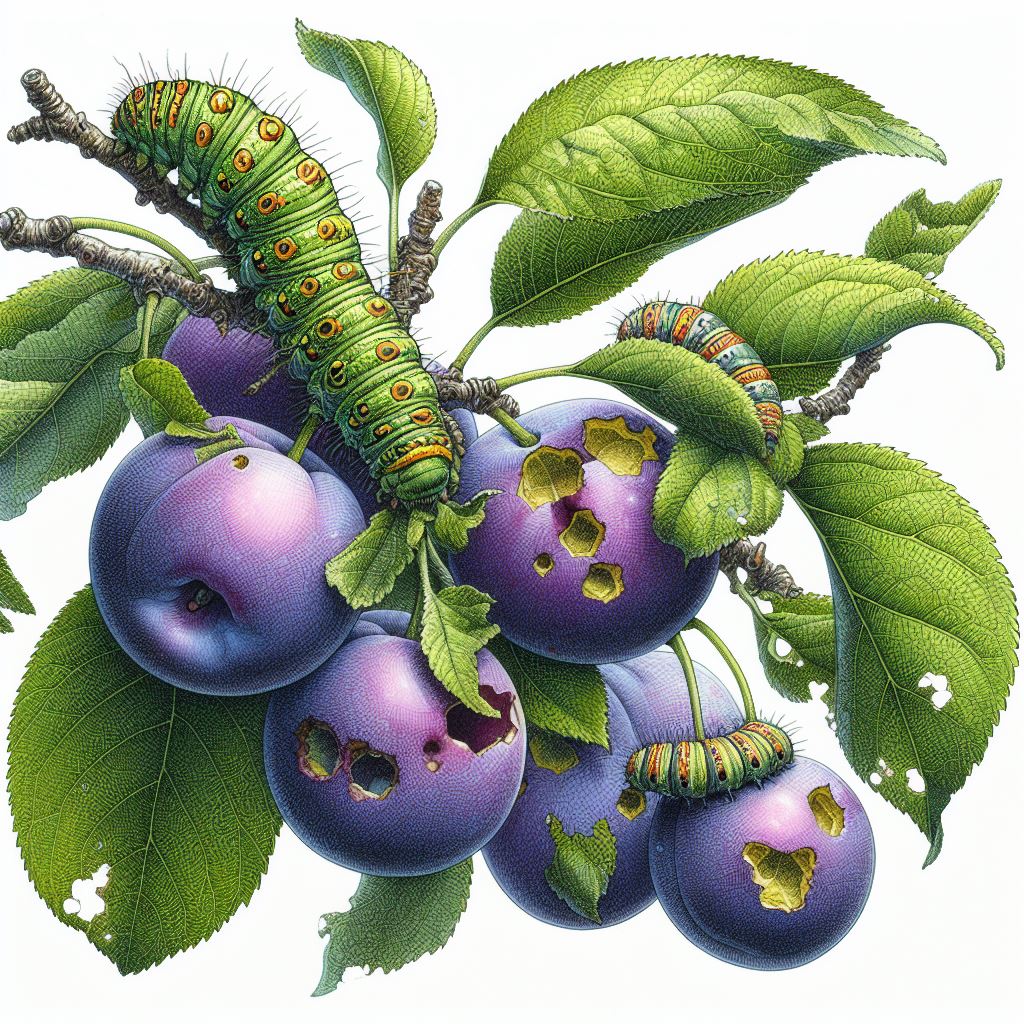My grandma's orchard in Uplyme was filled with plum and apple trees, and that’s where I learnt how voracious are winter moth caterpillars. Grease bands and tree barrier glue are effective and ecologically sound methods to protect these valuable trees, stopping the female moths from laying caterpillar eggs which feast on the leaves and buds, jeopardising the entire season's fruit yield.
Table of Contents
Understanding the Menace of Winter Moth Caterpillars
Winter moth caterpillars emerge as a significant threat to fruit trees during their larval stage. They're particularly fond of apple, plum, cherry, and pear trees. The damage from these caterpillars isn't just cosmetic; it can significantly reduce the yield of the fruit trees.
The Role of Grease Bands and Tree Barrier Glue
Both grease bands and tree barrier glues serve as a line of defence against these pests. They're essentially sticky barriers applied to the trunks of fruit trees, designed to trap wingless female moths who climb the trees to lay their eggs which hatch into the caterpillars that cause the damage. These methods are safe, not potent enough to trap mammals or birds, yet effective against the target insect.
When and How to Apply Grease Bands and Barrier Glue
The timing for application is crucial. My gran would apply these barriers in late autumn just before the adult moths emerge and she’d leave them on until April when moth activity subsides. She said to remove them every year in the spring to avoid impacting other insects. If you want to double check if winter moths are the issue, consider using pheromone traps the year before to see if it's something different causing the fruit damage like a codling moth
Gran used to get me to use ready-prepared sticky paper grease bands while she’d deal with other trees that she’d decided would be better served by painting on barrier glue. Sticky papers are convenient; I’d just wrap them around the trunk, ensuring a slight overlap for complete coverage and even my teenage fingers and complete lack of common sense couldn’t mess it up. For trees with rougher bark, which might provide crawl spaces for moths, she’d apply glue directly to the bark as it fills in the crevices, leaving no room for moths to sneak through.
How to Make a Grease Band for Fruit Trees DIY
As a sustainable gardener, I’d advise that you make your own DIY grease bands for trees to protect them from crawling pests like winter moth caterpillars,
To make a homemade grease band:

Ingredients:
Honey (as an eco friendly alternative to petroleum jelly)
A strip of burlap or an old cotton cloth or a strip of corrugated cardboard, about 4 to 6 inches wide
Instructions:
- Cut the Strip: Cut a strip of burlap or an old cotton cloth long enough to wrap around the trunk of your plum tree, about 4 inches or more wide.
- Apply Honey: Coat one side of the strip with a thick layer of honey or your fav sticky substance with a spatula that you’ve nicked from the kitchen. Make sure the layer is continuous and even.
- Wrap Around the Trunk: Carefully wrap the sticky side of the strip around the trunk of the plum tree, ensuring a snug fit. Place the band above the soil level to prevent it getting clogged with earth that’s splashed on during rains or pests bypassing it somehow
- Secure in Place: Use string or twine to secure the band in place. Make sure it's tight enough to stay put but not so tight that it harms the tree. If there are gaps under the band fill with wadding and more honey.
- Check and Replace: Regularly check the grease band for effectiveness, as it will get covered with debris or lose its stickiness over time. Replace it as needed, especially during the peak pest season.
Decide If You Even Need To Protect That Tree...
It's crucial to remember that not every tree needs protection, and not every caterpillar sighting warrants action. I don’t use these barriers on ornamental trees since the damage doesn't impact their long-term health, and maintaining the ecosystem's balance is vital. It's about managing the infestation thoughtfully and intervening only when the damage crosses a specific threshold. Observing and understanding the extent of infestation is key before taking action.

